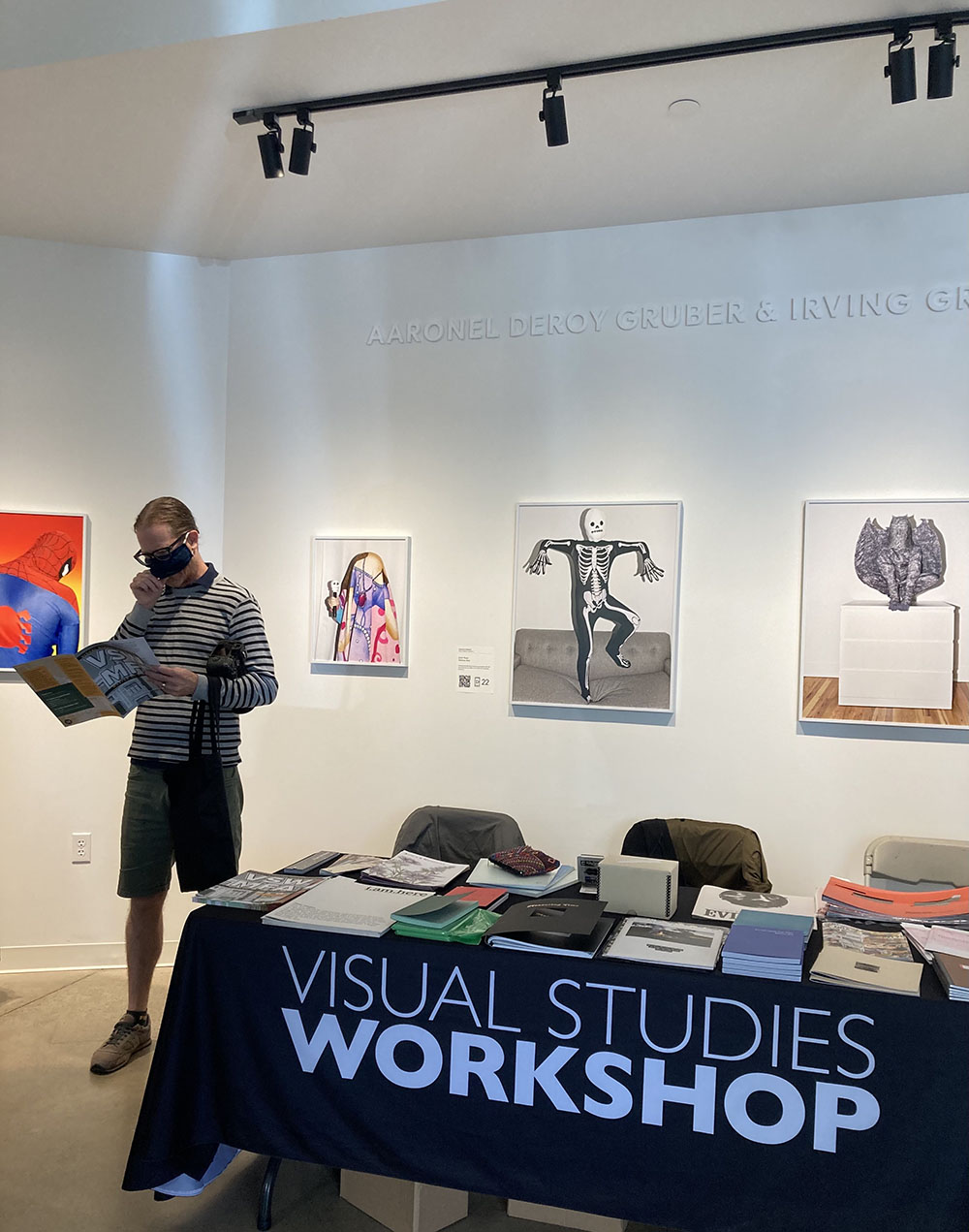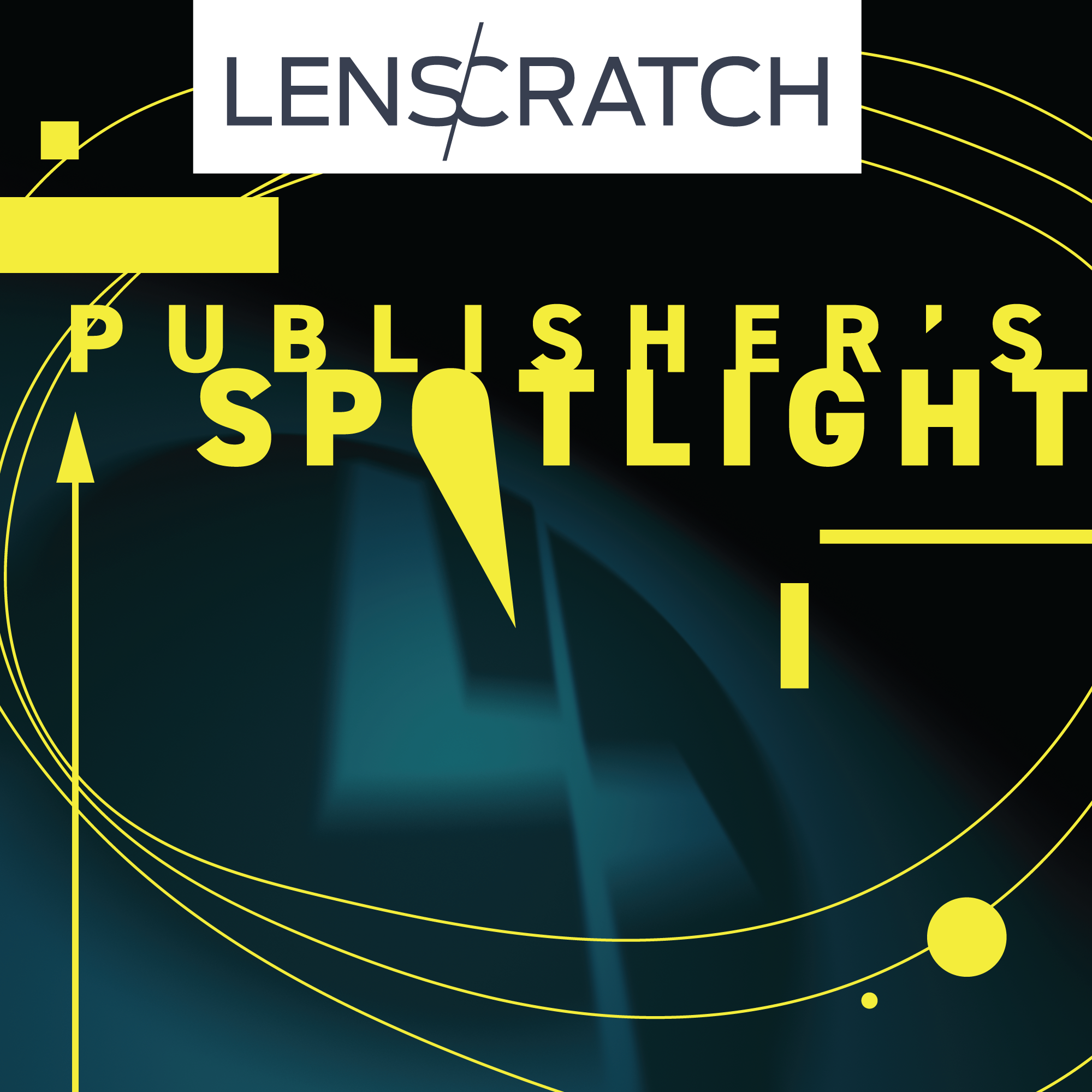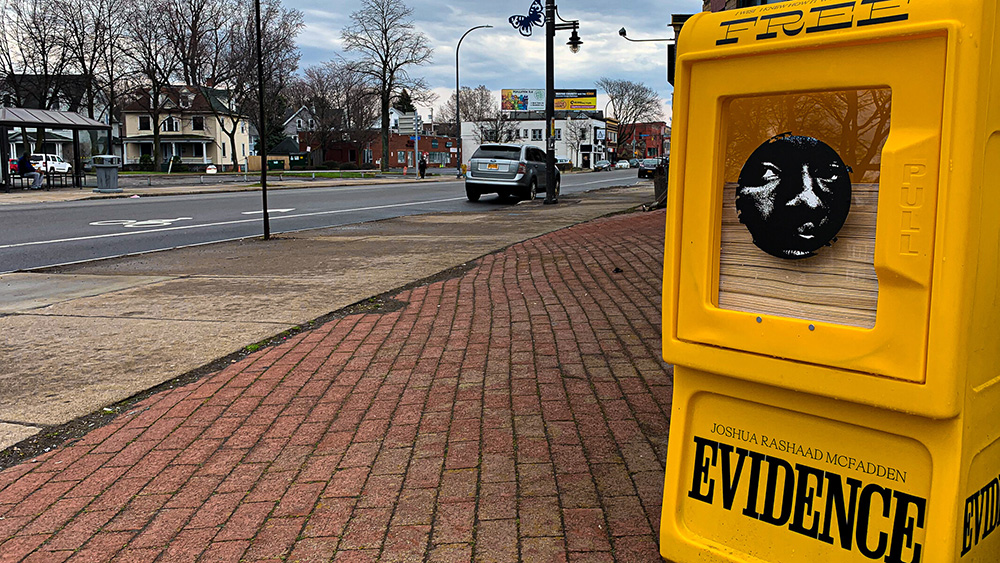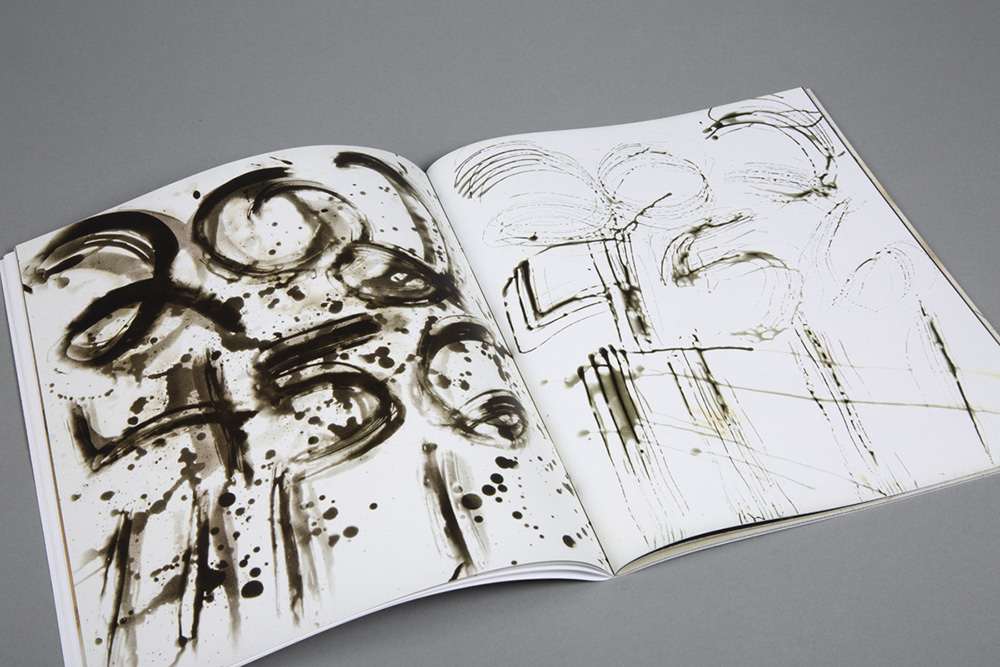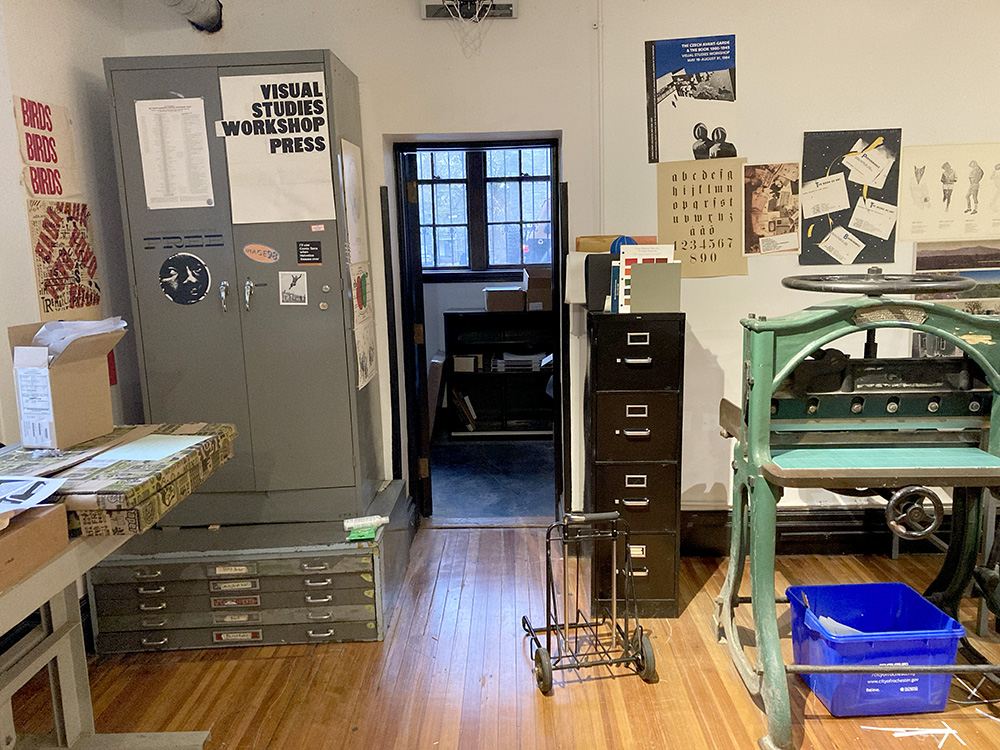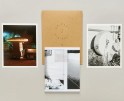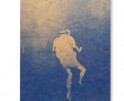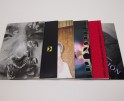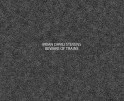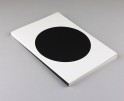Publisher’s Spotlight: Visual Studies Workshop
This month is all about books on Lenscratch. In order to understand the contemporary photo book landscape, we are interviewing and celebrating significant photography book publishers, large and small, who are elevating photographs on the page through design and unique presentation. We are so grateful for the time and energies these publishers have extended to share their perspectives, missions, and most importantly, their books.
Visual Studies Workshop’s mission is to support makers and interpreters of images through education, publications, residencies, exhibitions and collections.
Today, photographer Lisa McCarty interviews the director of Visual Studies Workshop, Tate Shaw.
Follow Visual Studies Workshop of Instagram: @visualstudiesworkshop
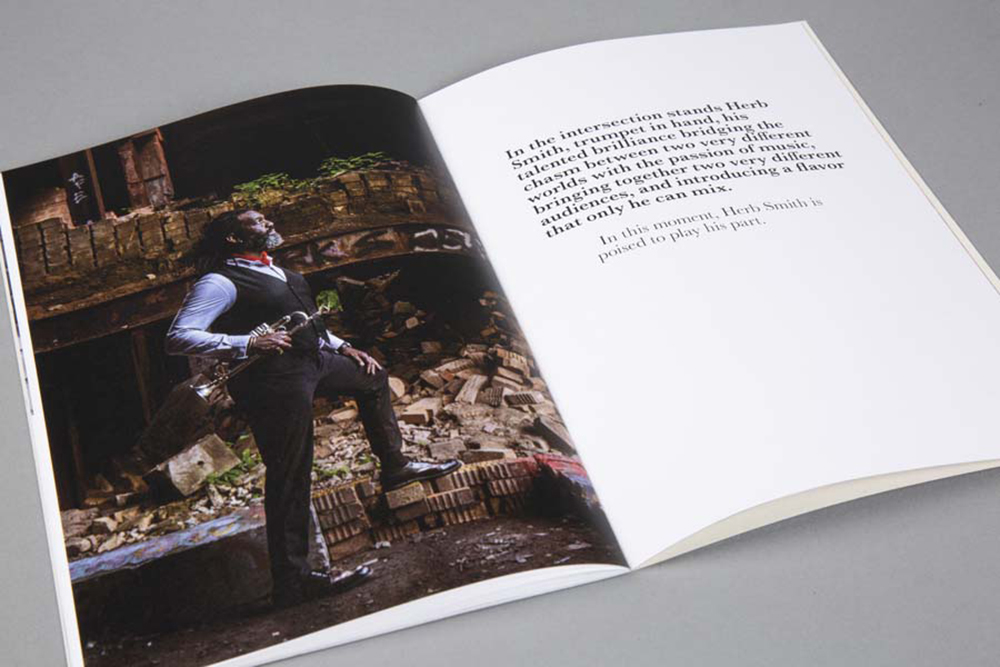
© Jackie McGriff, Herbert Smith for the In This Moment: Revolution, Reckoning, Reparation, series of ten chapbooks, 2020-2021, VSW Press
What was the first book you published, and what did you learn from that experience?
Joan Lyons published my book String Lessons through VSW Press in 2004, her last year as director of the press. Through that process, Joan taught me how to prepare the files for press sheets to maximize space and reduce expenses for printing on an early version of an HP Indigo digital offset machine at a job shop she often used then in Rochester, NY. I did all the labor for that project and by learning the processes, as well as understanding the time and money involved, gained some confidence and an even stronger desire to make more books. The following year, Karaoke by Masumi Shibata was the first book published by my personal publishing project, Preacher’s Biscuit Books, a partnership with a friend, Kristen Merola. Masumi was also a friend and all three of us were around Visual Studies Workshop at the time when PBB was created. Masumi had just left the VSW MFA program, I was in my second year, and Kris was just finishing the degree. Masumi had created a method of photographing sound in the darkroom by flipping an audio speaker on its back side and playing music through it while a developer tray rested on its front and upright side to create ripples and vibrations through the fluid, which would appear on the photosensitive paper that floated in the tray. When he showed me the process, I said something to the effect of, “if you photograph an entire song, that’s a book, and I would publish it.” He agreed, and when I told Kris that I was going to publish Masumi’s book, she listed off all the things I would need to consider from a logistical perspective that I hadn’t thought of, so we agreed to do it together. I learned so much from those first projects including mistakes that I sometimes still repeat, usually due to lack of time or money. The positive things I learned were how to collaborate and stay in constant communication with an artist to help create their vision for the book, that artist publishing is a collaborative art form with co-creators including the artist, designer (if they are separate), the publisher(s), printer, and binder. The point, as I see it, is to learn what an artist sees and thinks about the world as structured in a book so understanding and articulating their vision is central to the paradigm. But because I’m often working with a limited budget, usually between $2,500-$5,000 per project, for relatively small run publications between 100 and 500 copies, I sometimes feel like I’m at the mercy of the compromises the artist, designer, printer, and binders are willing to make in the process. I’ve learned to stay flexible; to always ask for what is wanted because some version of it is probably possible to produce; to always ask to see good proofs and mock-ups before committing to the production; and when mistakes are made in production, to cop to them or push the person who is responsible to fix the error, even when it means a complete re-do. With Karaoke, we had selected all the material and made good decisions for the hard binding and expected it to have a spine board but didn’t ask to see a full mock-up that we would sign off on. When you have limited resources, the producers you work with have defaults and cost or time saving measures they will frequently use. In this case, the binder assumed that because the book was relatively thin, it didn’t need a spine board and it would save him a step and materials to leave the spine soft and rounded. When we got all the books back, we were somewhat disappointed at first, but had no recourse for correction. In the end, we had to make the aesthetic compromise to appreciate what it was and not what we expected it be, in order to stay motivated to sell it, which is the other half the project—there is the making half and the selling half of all publications. I’m bad at the selling part, usually. But I love Karaoke and (almost) never regret the mistake now. Fortunately, they are all sold and it’s not laying around in the storeroom as a tell-tale heart.
What is your mission as a publisher?
To expand the field of books-as-art to include under-represented perspectives that embody a wider world of creativity, thought, cultures, technologies, forms, access, and ideas than are more frequently the focus of larger publishers, as well as to help reveal the book in an artists’ greater practice.
Oftentimes we are working with multi-disciplinary artists who have not yet made a book as an artwork.
How big is your organization?
VSW currently comprises me as Executive Director and program director of the Press; an Assistant Director and Curator of Collections as well as residencies, granting and development; a Curator of Moving Image Collections who programs a Salon Series and Media Conversion Lab; a part-time Assistant Director of Education; a Media Technician; Cataloger; Library Assistant; Bookkeeper; and two graduate assistants supporting the programs. If we’re just talking about the press, it’s me and a part-time grad assistant doing the work.
What are the difficulties that publishers face?
Distribution is the biggest difficulty for VSW Press. We create the publications with artists as well as any marketing/promotions, warehousing, sales, shipping, and distribution network development and support. For smaller publishers making smaller run publications there is little to no support on the distribution end by way of entities who are aggregating titles to distribute through bookstores or shopping them to libraries/collections. We have one dealer we work with for about a third of our titles. The others are sold and distributed mostly by grassroots means.
Are there any publishing projects that have been particular meaningful to you?
In the last two years we’ve published a free newspaper on Black masculinity called Evidence by photographer Joshua Rashaad McFadden and a series of ten free chapbooks that are profiles of Black leaders in Rochester by Black writers and photographers called In This Moment: Revolution, Reckoning, Reparation. For Evidence, Joshua Rashaad’s vision included the fabrication of numerous newspaper boxes that we placed all over the city and one is now in the George Eastman Museum as part of his solo show there. And for In This Moment, we had the books distributed through the public library branches. Expanding views of Blackness through photography publications, and the focus on people and distribution in our own city, and fundraising to provide them for free, has been a new form of publishing for VSW Press and for me personally that aligns well with what it feels like to be alive right now. I felt more a sense of community, met more people in my community, and learned more about humanity working on these publications than I’ve felt from visual book publishing in years.
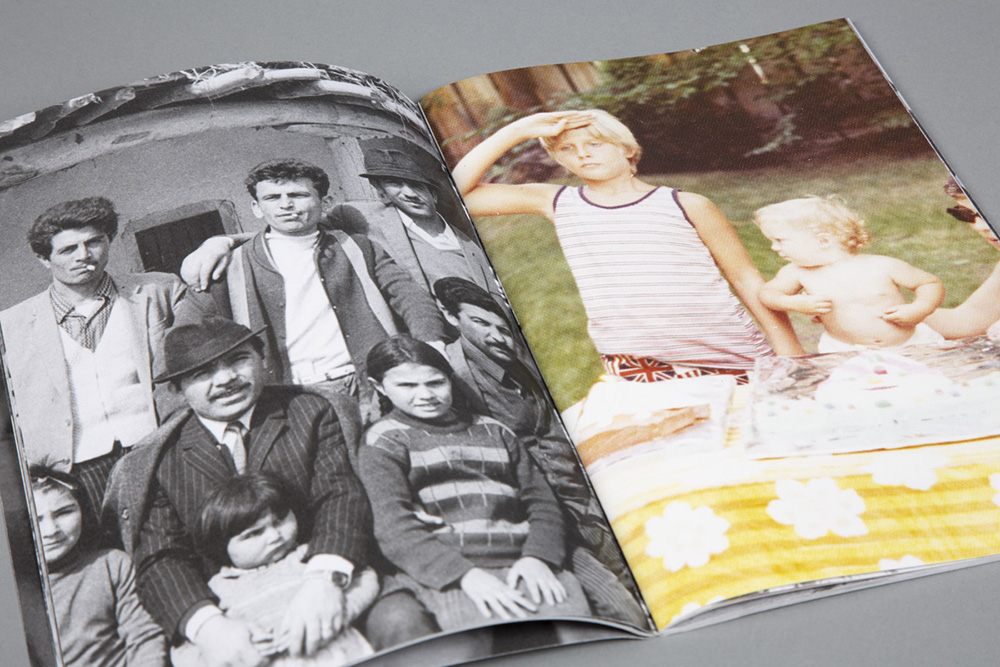
© Alejandro Cartagena, A Small Make Believe Neighborhood, 2017, VSW Press, 10.25 x 6.5 inches, 44 pages, saddle-stitched, open edition
What upcoming projects are you excited about?
There is an Aaron Turner book coming out in early 2022 that is a great extension of his Black Alchemy series. We started a new imprint this year called Film Art Book, FAB, beginning with Measuring Time by film artist Ephraim Asili that focuses on film and video artists’ books, and we have titles by Dani and Sheilah ReStack, Luther Price, an historical piece about a film that VSW students made with Robert Frank in 1971, and others in the works for FAB that are motivating. There is also second round of In This Moment chapbooks coming in 2022-23, which is exciting.
How many books do you publish a year, and how do you choose which projects to publish? Do you have a specific focus?
We publish 4 artists’ books a year and 4-6 smaller more zine-like or pamphlet productions. And special projects like In This Moment and Evidence are in addition to that production schedule. The focus varies but we’re usually working with artists that have been in residence with us, supporting their work.
How can an artist get their work in front of you? Do you have any advice for photographers?
VSW calls for proposals and has 20 residencies available a year. Those proposals are the best way for us to learn about work. To photographers who want to create a book, I highly recommend first reading Publish Your Photography Book by Mary Virginia Swanson and Darius Himes as well as back issues of Aperture’s Photobook Review. The Swanny/Himes book is a few years old by now but the spectrum of options they propose still seems right and if you’re being as objective as possible about your goals for the work, there is likely a proscribed approach in it that will be a good fit.
What is the typical timeline of a project, from the beginning to the finished product?
Usually, the process from inception to printing takes about a year depending on the complexity of the production and fundraising involved. And that’s just the book development. It doesn’t take into consideration the thought and labor that went into conception and production of the material going into the book be it images, texts, etc.

© Hannah Smith Allen, Borderlands, 2021, VSW Press, 11.5 x 13.5 inches closed, 11.5 x 17.5 inches open, comes in a hand screen printed, die-cut slip case
How collaborative is the design process with the artist?
There is a definite spectrum from the very collaborative to the much less collaborative and more formulaic depending on the project and the needs. Because we are often generating the book with artists who may not have published a book before, or with artists who primarily work in other media like film, video, installation, and experimental forms, I’m often in the position of physically doing the layout and collaborating extensively on the design and production needs based on the artist’s ideas.
How is the financial side of the project structured between publisher and artist? Does the artist contribute to production cost?
VSW is highly committed to paying for all the production costs of projects. We sometimes have an artist who will have some external funding from an institution or grant that is included in order to raise the budget for something they want to have happen in the book but that’s a little less common. We give artists between 10-25% of any print run we do.
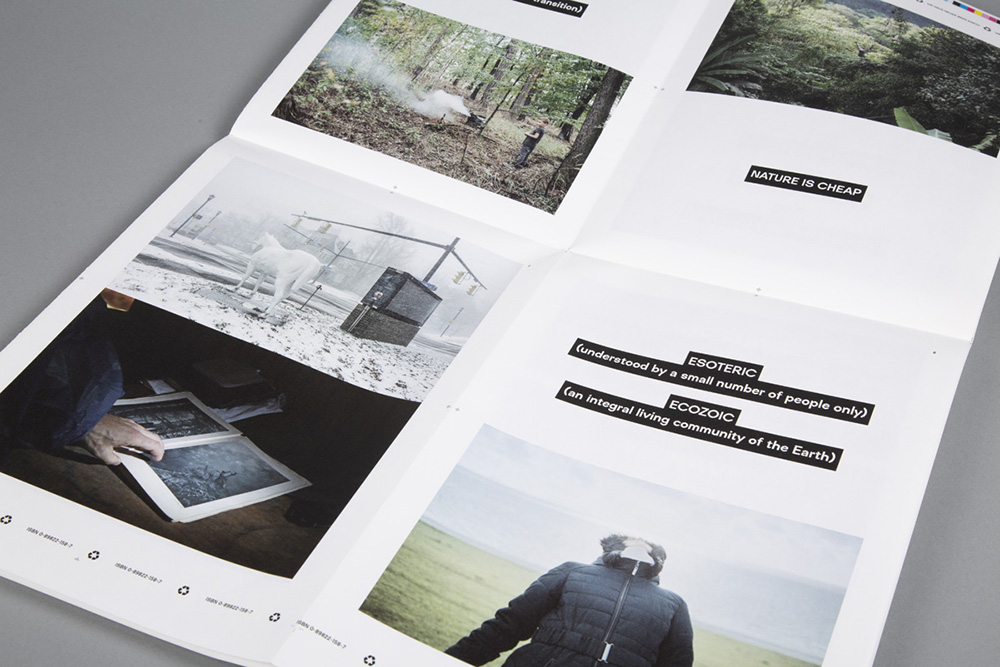
© Andrea Pruchova and Tomas Hruza, We Have Never Been Earth, 2019, VSW Press, 16-page fold-out folio and 16-page booklet in plastic envelope, 9 x 12.5 inches, color and b/w, offset. Printed in the Czech Republic
What support do you give artists in terms of marketing or distribution? Do you attend book fairs?
VSW Press has an online store, attends book fairs usually in the northeast/mid-Atlantic area. When artists we work with have exhibitions, screenings, or other events we contact exhibitors and museum shops and offer wholesale rates so titles are available on-site for events. We maintain the back catalog and orders in perpetuity for the artists.
What advice would you give to a photographer who is working on their first book?
To think of it more as a literary, musical, or filmic experience you’re creating as opposed to a container or exhibition of your pictures.
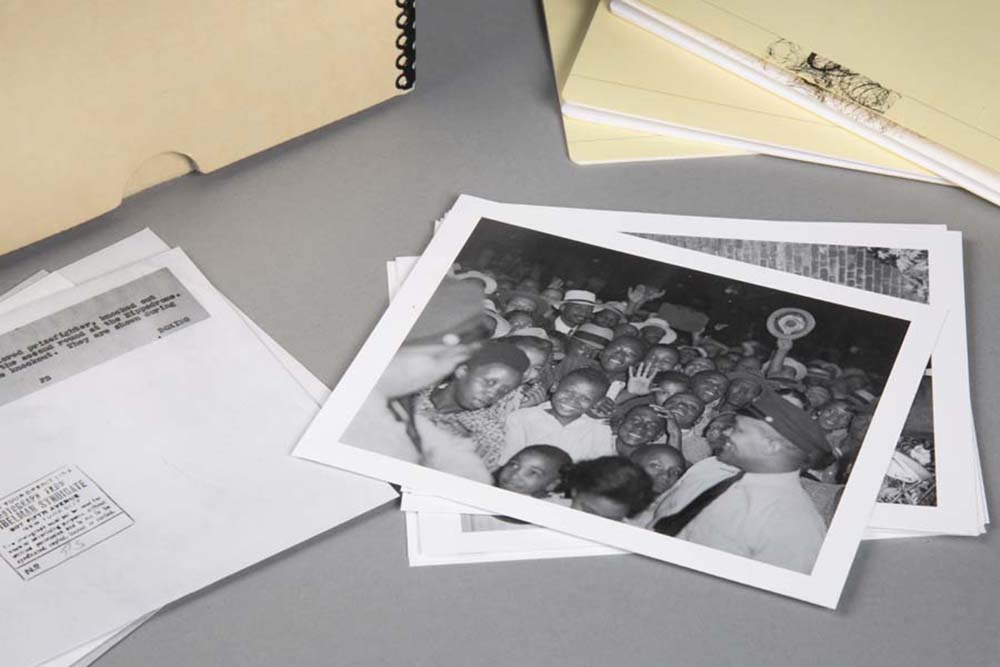
9 © Amanda Chestnut, African Americans, Civil Rights, Jesse Owens, 2021, VSW Press, 4 x 6 x 4.5 inches, includes 41 booklets and 15 photographs; edition of 40 books
Is there anything we haven’t asked that you’d like to share about your books or approach to publishing?
Just to acknowledge that it’s somewhat rare for VSW Press to be considered in dialog as a publisher of photobooks though I very much think we are, in our own more experimental way, and the inclusion is appreciated. The wider field has always included a diverse range of people making and experimenting with photography and books as artworks but if it isn’t in the mold of a more monographic-leaning object then these books aren’t often considered photobooks. Some of the most interesting and complex photobooks are made by people who don’t necessarily identify as photographers. For instance, Canadian film artist Michael Snow’s Cover to Cover or more recently books by Ellie Ga, Karen Green, and Bernadette Mayer all published by Siglio Press have made incredibly rich and complicated photobooks but they would almost never be considered such because the authors aren’t capital P Photographers and Siglio published works intersecting literature and art. Having an expansive view of photography publications is appreciated.
Lisa McCarty is an artist and writer based in Dallas, Texas where she is Assistant Professor of Photography at Southern Methodist University. McCarty has exhibited her photographs, books, and videos in over 80 exhibitions and screenings at venues including: Alchemy Film & Moving Image Festival, Amherst College, Cape Cod Museum of Art, Cassilhaus, Colorado Photographic Arts Center, Fruitlands Museum, Houston Center for Photography, Internationale Photoszene Köln, McEvoy Foundation for the Arts, Mimesis Documentary Film Festival, the Nasher Museum of Art, Noorderlicht Photo Festival, the New York Film Festival, the Ogden Museum of Southern Art, and the Visual Studies Workshop. Her books include Transcendental Concord (Radius Books), The Arboretum Aphorisms of Nathaniel Dorsky (San Francisco Cinematheque), & A Time of Youth: San Francisco, 1966-1967 by William Gedney (Duke University Press).
Follow Lisa McCarty on Instagram: @insta.lisa.mccarty
Posts on Lenscratch may not be reproduced without the permission of the Lenscratch staff and the photographer.
Recommended
-
Publisher’s Spotlight: Smog PressJanuary 3rd, 2024
-
Publisher’s Spotlight: Kult BooksNovember 10th, 2023
-
Publisher’s Spotlight: ‘cademy BooksJune 25th, 2023
-
Publisher’s Spotlight: Brown Owl PressDecember 10th, 2022
-
Publisher’s Spotlight: DOOKSSeptember 26th, 2022

